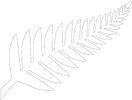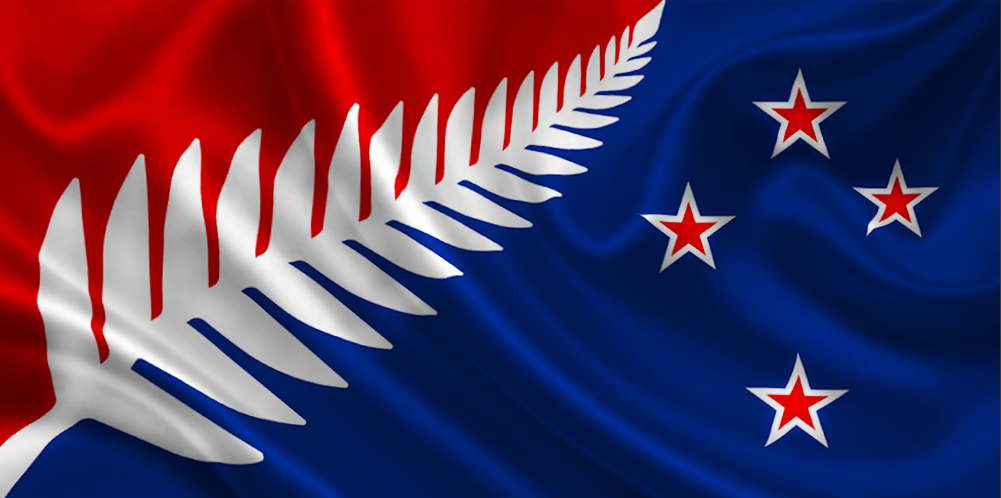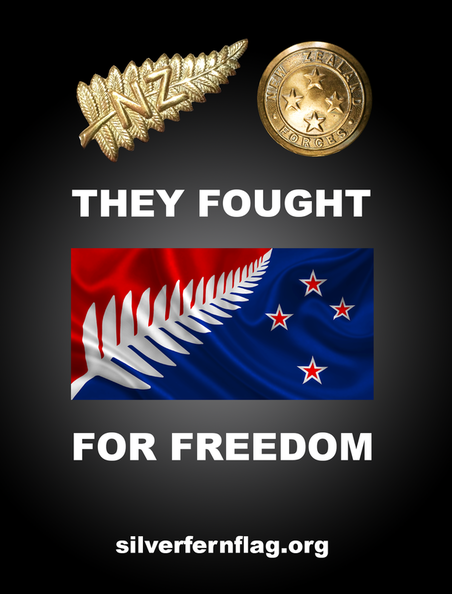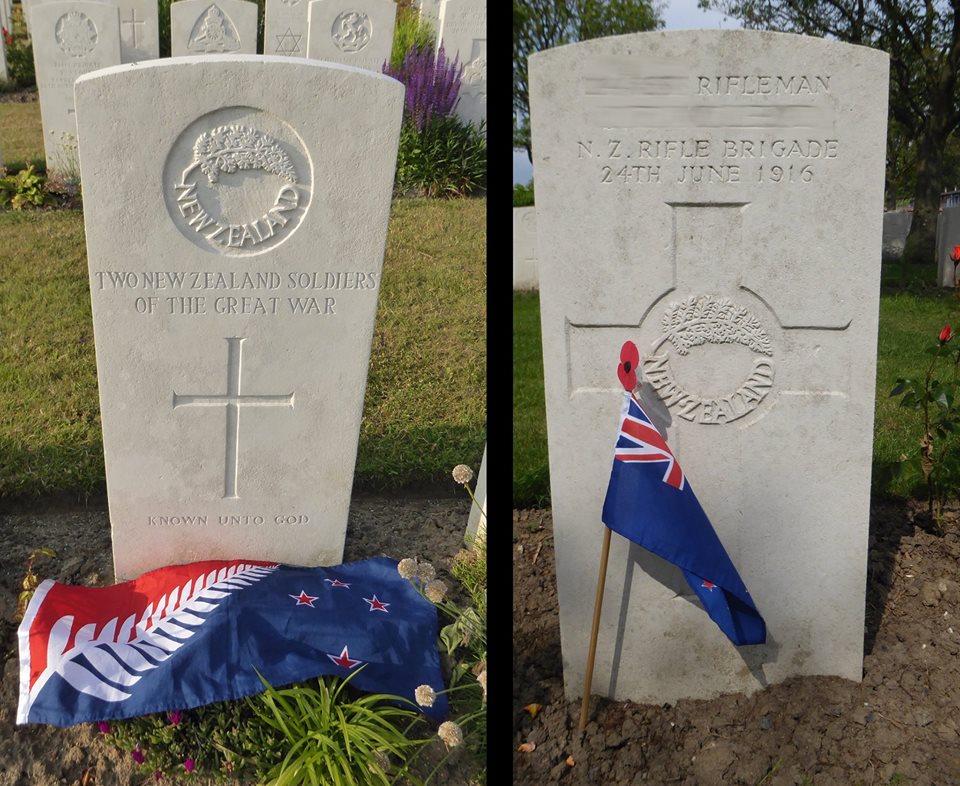Mike Summerfield, one of almost 20 people who suggested the design, says Hundertwasser’s experience as a migrant is core to the Kiwi experience. On the government’s flag design submission website, he writes: “In terms of global history, everyone is a recent migrant to New Zealand. The Hundertwasser Koru Flag is tied in with a story of a migrant who made New Zealand home and gifted the nation with a design that reflected the culture he saw here.”
New Zealand artist and illustrator Otis Frizzell has also based his design on traditional Maori motifs. Frizzell has retained the stars of the Southern Cross on his bold submission, which is rooted in three main elements; the sky, land and sea, and is shaded in green, black and white. “The Southern Cross is the first thing you notice. It is what led everyone here right from the first settlers to the colonialists. It is the navigation point that got everyone here,” he explains. “The white of the flag represents the long white cloud and also the white peaks of the ocean. The green shapes at the bottom are our mountains and waves from the green ocean. That ‘screams’ New Zealand to me, anyway. “It is sort of putting wrongs to right, and when I was a kid I didn’t know the difference between the New Zealand and Australian flag. I thought we had the same flag,” he says. ‘Simplicity is the key’ In September, Sydney will host the 26th International Congress of Vexillology, an event held every two years which attracts flag experts from all over the world. The chair of the Sydney organising committee is Ralph Kelly, who considers flags to be objects of art. His personal collection includes the royal standards of the German Kaiser and the Shah of Persia, along with the flag of Swaziland, which has a large shield that “just screams Africa and means something,” he says. "Some of the most ineffective designs try to do too much" “Some of the most ineffective designs try to do too much. The best approach is to work out the most important elements of a country that you are trying to represent,” he explains. “Simplicity is the key. The downside of that is you do have to give something up. That is why ultimately you are going to get something which pleases the majority but not everyone.” However, some flags are considered more pleasing than others. One example is Canada’s 11-pointed red maple leaf – widely regarded as a vexillologist’s delight. It is simple, striking and immediately recognisable. Kelly believes it has been extremely effective in “reinforcing a national identity.” But it is not the symbol that represents one of the world’s biggest countries that pleases Kelly the most. It is the banner that flies over its smallest republic – a tiny island nation in South Pacific. “My favourite flag is Nauru, which is a blue flag with a yellow line across the centre which marks the equator, and a large 13-point star which represents the historic clans of Nauru. It says ‘this is where I live in the world,” he says. Defining a nation’s character In New Zealand, the most common themes in the national flag consideration project are the silver fern and the kiwi, a flightless bird with a long bill. A decade ago, architectural designer Kyle Lockwood won a flag competition in his local newspaper in the New Zealand capital, Wellington. With a few modifications, he has submitted the same design ahead of this November’s referendum that features a silver fern on one side and the Southern Cross on the other with vivid red, white and blue colouring. It has fans in high places – Lockwood’s creation is the preferred choice of Prime Minister John Key. “The Silver fern resonates with a lot of people in New Zealand. It has been our symbol since at least the 1880s. It is instantly identifiable by all generations of New Zealanders at home and abroad as our truly unique national symbol,” Lockwood tells BBC Culture. “It is quite hard to get an entire nation represented on a piece of cloth. I do see it as a work of art and it is also something that should represent all of us.” Ultimately, a flag should define the character of nation. It is no easy task, even in a proud country as small as New Zealand. http://www.bbc.com/culture/story/20150714-what-do-our-flags-say-about-us
0 Comments
War historian Allan Udy honouring one of his fallen ancestors. Those who made the ultimate sacrifice, are now buried in far-off fields under the silver fern. It is said that one New Zealand Ensign, and thousands of silver fern badges and southern cross buttons went ashore with our soldiers at Gallipoli, tens of thousands of silver ferns were present on the uniforms of our brave NZ soldiers of both world wars, so what did they really fight for? Allan says; 'Let's not get caught up in the "... our servicemen fought for our current flag.." argument – our lost servicemen have lain under the silver fern for over 100 years in some cases. Allan also writes; 'Our New Zealand servicemen who fell in foreign lands have lain under the silver fern for over 100 years in some cases. The Silver Fern flag would be a lot easier to spot in the many Commonwealth War Grave Cemeteries around the world compared to the current flag, which when furled is difficult to identify from a distance' Allan wrote the book On the Wings of History and works for the Historical Aviation Film Unit which produces high quality still photographs and video footage of aviation and motorsport activities, and publishes the material in a variety of formats for the enjoyment of enthusiasts worldwide.
|
MEDIAArchives
December 2022
Categories
All
|







 RSS Feed
RSS Feed
